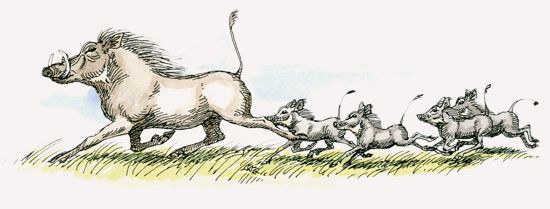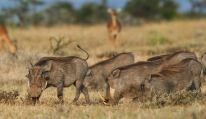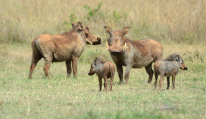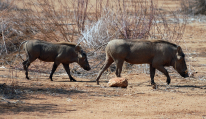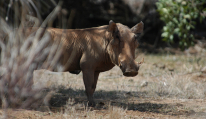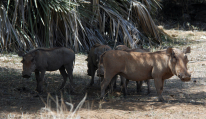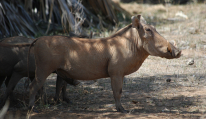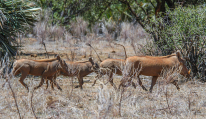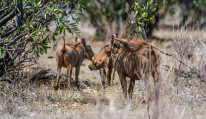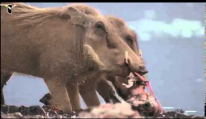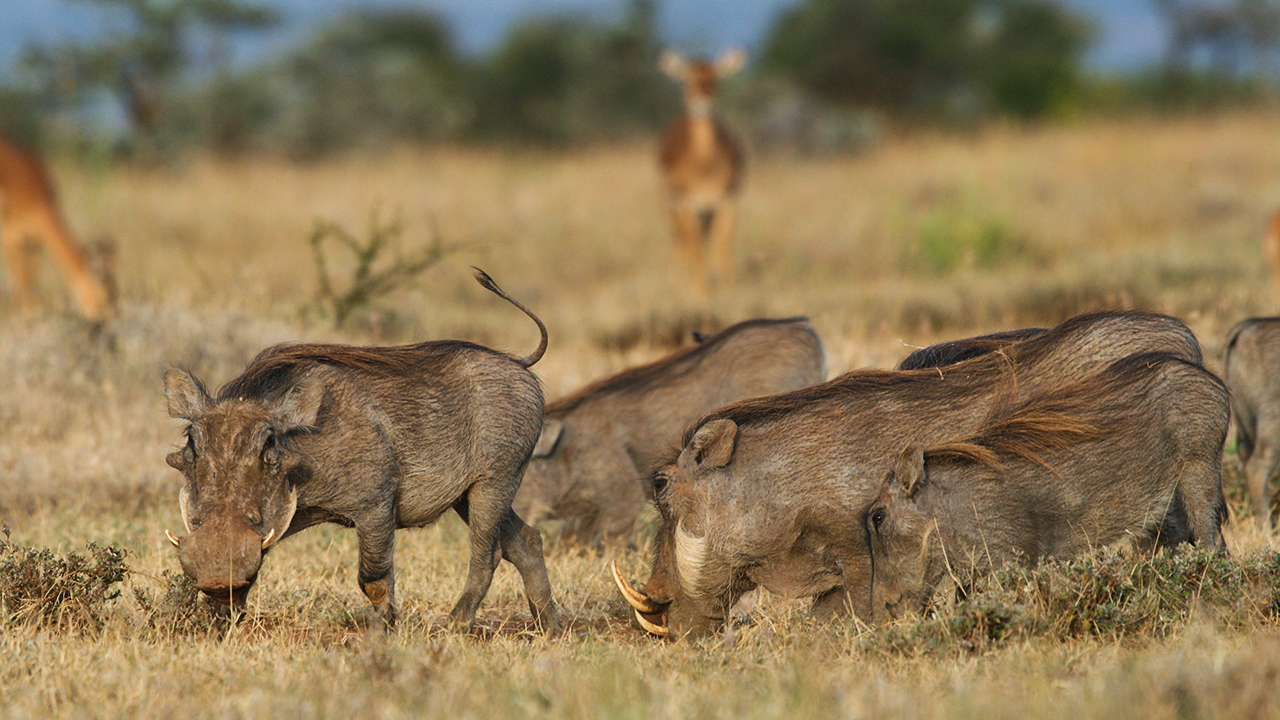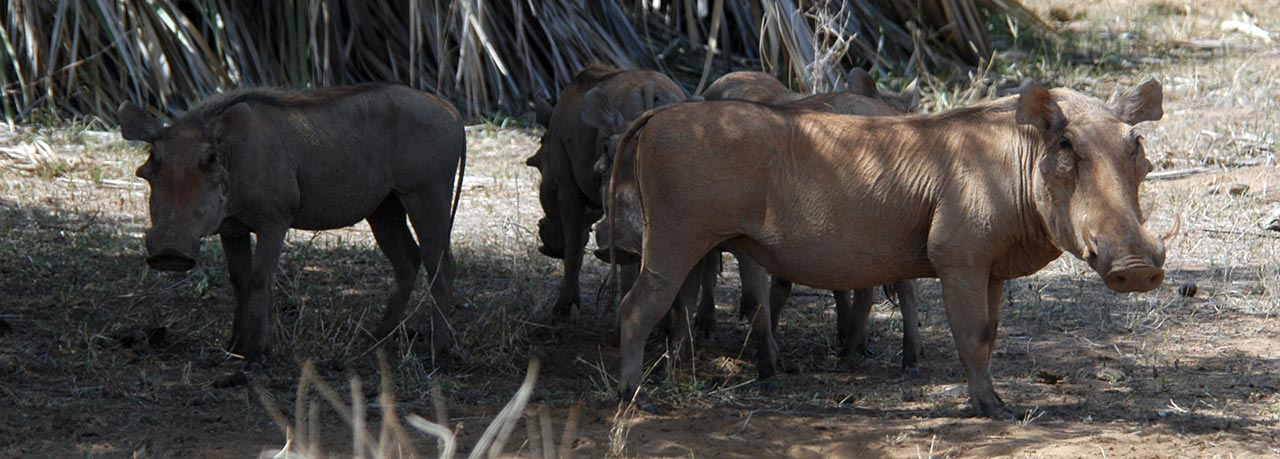Social Structure
Warthog family groups are based around females. A single adult female, her most recent litter of piglets, and a few female offspring from her previous litters form the core of the social structure. A female and all of her offspring maintain strong bonds, though the number in the family group is limited by the size of their nightly burrow. Males leave the family within their first year of life, forming bachelor herds or remaining alone.
Communication
Warthogs use a range of grunts and squeals to communicate greetings, alarms, and threats. Body language is also important. A characteristic threat display includes a raised mane and tall stance, with the tail pressed flat against the side of the body; a greeting involves sniffing and touching another warthog’s nose or mouth.
Behavior
Warthogs spend their nights in burrows or holes. The piglets in particular need these shelters to survive. They must huddle together to maintain a warm body temperature or risk death. Warthogs emerge from their holes at sunrise and spend the day eating, walking, and socializing for brief periods. Young warthogs enjoy play-fighting, and older family members groom one another to remove nits. Warthogs rest in the shade during the hottest part of the day and return to their burrows at dusk.
Conservation
Though the International Union for Conservation of Nature (IUCN) lists warthogs as a species of lower risk, their susceptibility to drought and predation is cause for concern. In some regions, hunting by humans is a major threat. Due to a mistaken belief that warthogs spread swine fever to domestic pigs, East Africa once promoted the eradication of warthogs.

